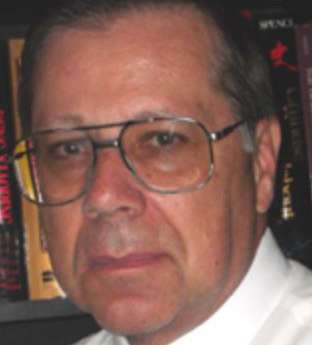
By JOHN RICHARD SCHROCK
Witnessing a homeless man or woman pushing a cart with all of their belongings raises a question in a teacher’s heart: could the right teacher at the right time in their early schooling have made a difference in their fate today? Teaching is a compassionate profession. Teaching is not for everyone. Teaching is for those who care.
I also told my student teachers that they must have a little “cop” in them in order maintain classroom order. –To corral the misbehaving pupil. –To provide fairness and insist their students are also fair to each other. While we reward good behavior, we must also curtail bad student behavior with appropriate discipline. But all of that is focused on helping everyone have a better future life. –Increasing their chances of success. –Decreasing their likelihood of becoming a homeless vagrant.
Putting a gun into a teacher’s hand goes against all that a teacher is trying to do. Teachers are nearly second parents in caring for our students and we are therefore protective of them. When the jetliners hit the Twin Towers during the 9/11 attack, teachers heroically shepherded their students out of the school building next door while burning debris fell all around. But we must not ask a teacher--whose job is synonymous with “compassion”--to add “destruction of life.” We live under the false belief that we can kill another person and walk away unchanged. No, it is traumatic.
Many Americans live with the belief that police have to shoot people all of the time. When we watch televised police dramas, we see someone shot nearly every episode. And in all the movies where John Wayne and Sylvester Stallone and Clint Eastwood were killing “bad guys” all the time, they walked away to a happy life. According to Pew Research, 83 percent of citizens estimate that an average police officer has had to fire his or her police gun at least once in their career, outside of training on the gun range. The true figure is that only 27 percent have ever fired their gun on duty in their life, and most of those instances were not necessarily targeting a person or killing them. For officers who had previously served in the military, that figure rose to 31 percent. And when they separated out female officers in similar on-the-line assignments, only 11 percent had fired their gun on duty in their career.
That means that nearly three-fourths of police hang up their gun belt at the end of their career without ever having fired at a person. For the much smaller percent who have had to shoot a criminal and in some cases kill them, the trauma to the officer can last a long time. Recognizing the effect of that death on the victim’s relatives makes such actions less black-and-white. Just as there is traumatic stress among soldiers who come home from having killed the “enemy,” police can suffer as well.
Ironically, Clint Eastwood, the cool unconcerned hero of many Westerns, directed and acted in the movie “Unforgiven.” His character states the reality that “It's a hell of a thing, killing a man. You take away all he's got and all he's ever gonna have.”
But few police dramas, with the exception of some recent “Blue Bloods” episodes, reveal the genuine stress that many police feel after killing a person, no matter the person’s level of villainy.
A 2018 Gallup poll found that 73 percent of American teachers did not want teachers to carry guns in school. Only 18 percent were willing themselves to carry a gun. That 2018 poll also found 58 percent of teachers believed that having teachers or staff carry guns would actually decrease safety in schools by making more guns available in the school setting for student accidental access. By 2019, another survey of over 2,900 teachers around the nation found 95.3 percent believed teachers should not carry guns in the classroom.
On April 22, 2020, the RAND Corporation released a report “The Effects of Laws Allowing Armed Staff in K–12 Schools.” They found “As of January 1, 2020, 28 states allow schools to arm teachers or staff in at least some cases or as part of a specific program.” They scanned all valid studies up to that time and “...found no qualifying studies showing that laws allowing armed staff in K–12 schools increased any of the eight outcomes we investigated,” outcomes ranging from preventing suicide to violent crime.
Teachers know why they want to teach. Carrying a gun is not one of those reasons.
. . .
The RAND report is at: The Effects of Laws Allowing Armed Staff in K–12 Schools
John Richard Schrock has trained biology teachers for more than 30 years in Kansas. He also has lectured at 27 universities during 20 trips to China. He holds the distinction of “Faculty Emeritus” at Emporia State University.





